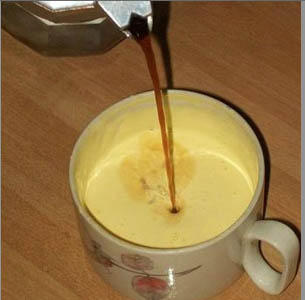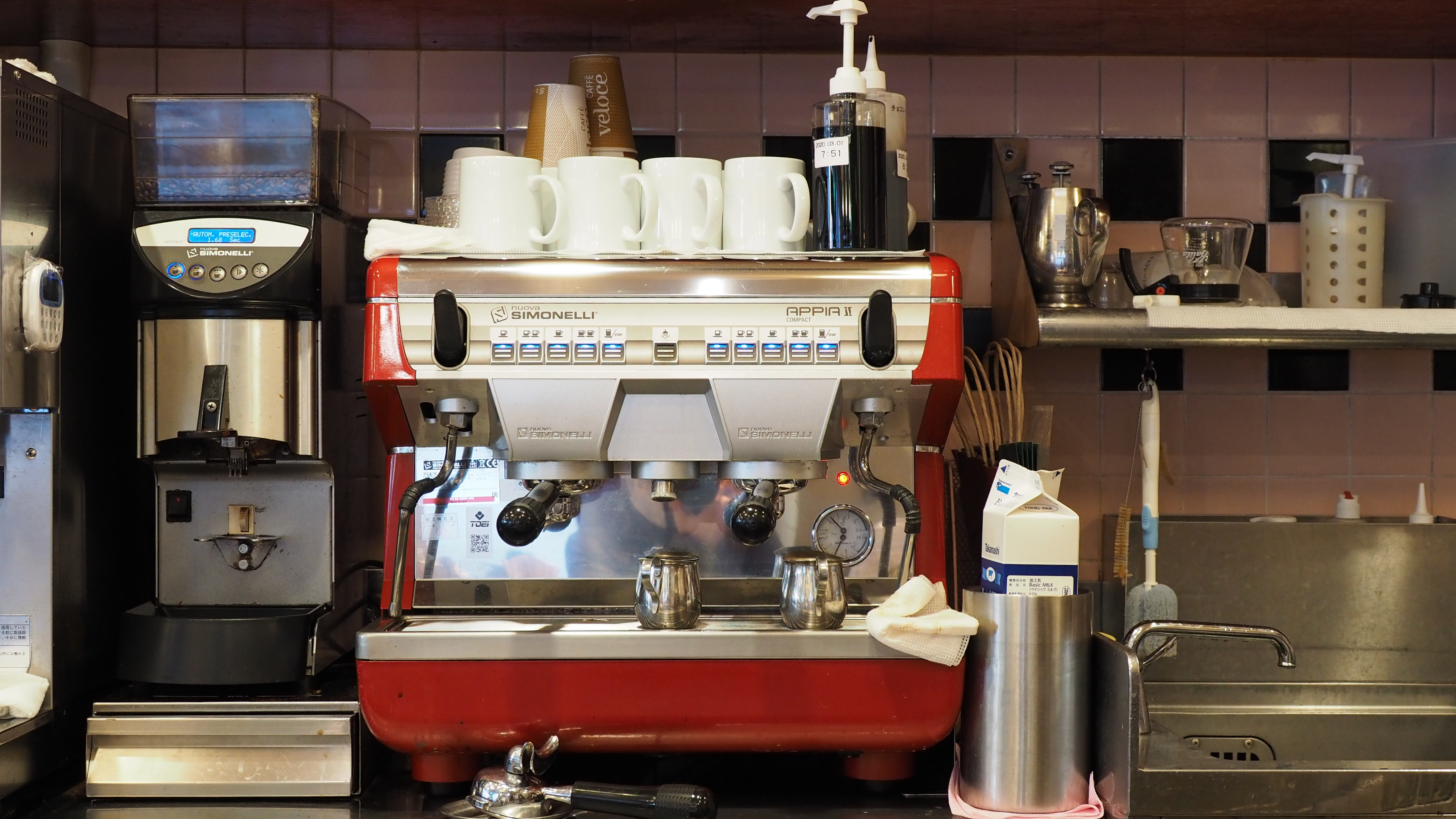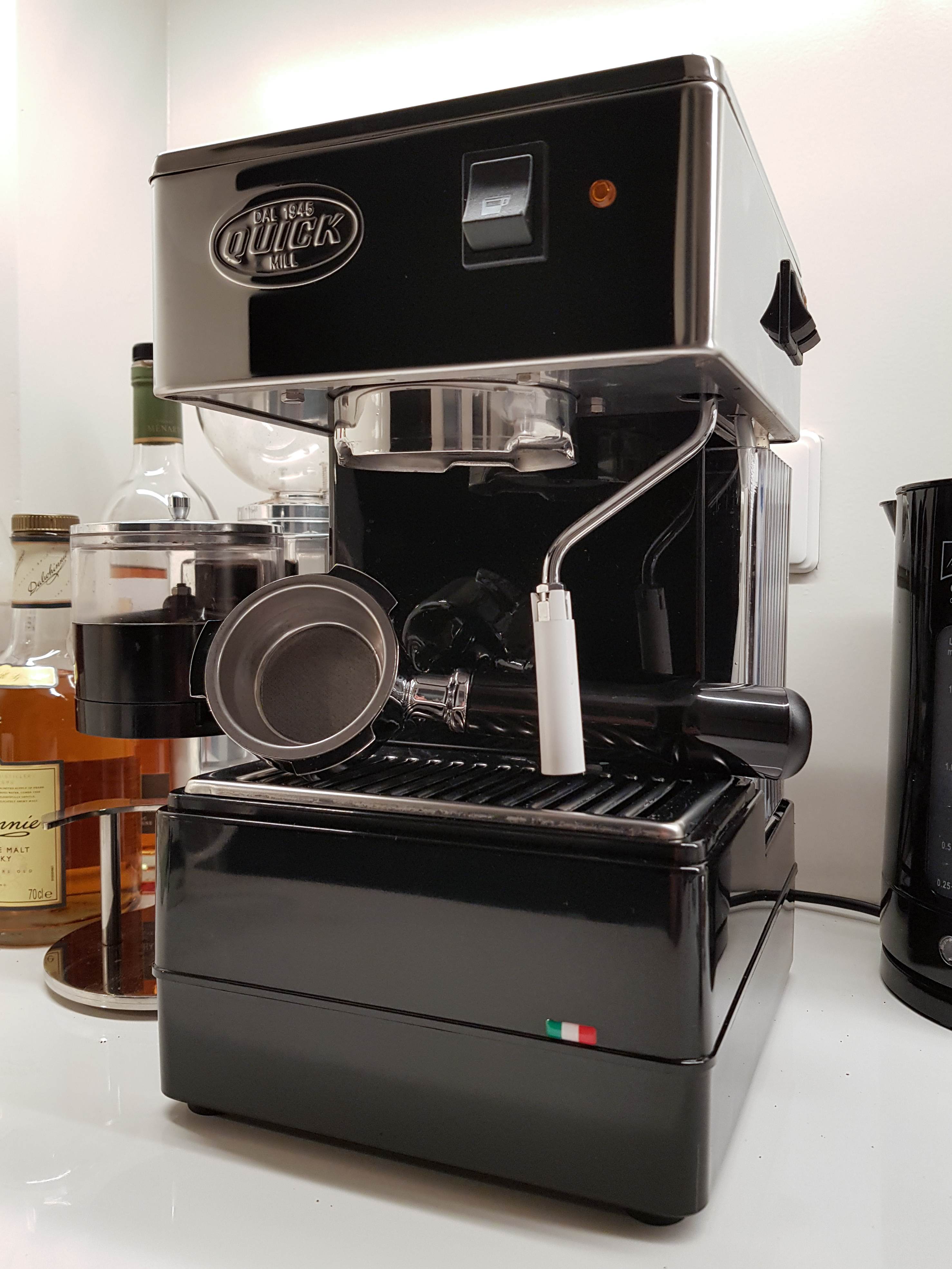|
Uovo Sbattuto
Uovo sbattuto (), also known as , or in Lombardy, is a common Italian breakfast item dating back to rustic times. Similar to ''zabaione'', uovo sbattuto consists of egg yolk and sugar, ingredients readily available in most villages and farms. In olden times it was considered an easy way to consume a quick and economical breakfast. Often espresso and milk can be added to make . This is usually eaten with crusty or toasted bread. When made for children, caffè d'orzo (a caffeine-free grain drink) can be substituted for the espresso. See also *Espresso *Zabaione Zabaione () or zabaglione (, , ) is an Italian dessert, or sometimes a beverage, made with egg yolks, sugar, and a sweet wine (usually Moscato d'Asti or Marsala wine). Some versions of the recipe incorporate spirits such as cognac. The desser ... References Sources Zabaglione al Caffé Recipe on Food52 Italian desserts Egg dishes {{Italy-cuisine-stub ... [...More Info...] [...Related Items...] OR: [Wikipedia] [Google] [Baidu] |
Lombardy
Lombardy ( it, Lombardia, Lombard language, Lombard: ''Lombardia'' or ''Lumbardia' '') is an administrative regions of Italy, region of Italy that covers ; it is located in the northern-central part of the country and has a population of about 10 million people, constituting more than one-sixth of Italy's population. Over a fifth of the Italian gross domestic product (GDP) is produced in the region. The Lombardy region is located between the Alps mountain range and tributaries of the Po river, and includes Milan, the largest metropolitan area in the country, and among the largest in the European Union (EU). Of the fifty-eight UNESCO World Heritage Sites in Italy, eleven are in Lombardy. Virgil, Pliny the Elder, Ambrose, Gerolamo Cardano, Caravaggio, Claudio Monteverdi, Antonio Stradivari, Cesare Beccaria, Alessandro Volta and Alessandro Manzoni; and popes Pope John XXIII, John XXIII and Pope Paul VI, Paul VI originated in the area of modern-day Lombardy region. Etymology The name ... [...More Info...] [...Related Items...] OR: [Wikipedia] [Google] [Baidu] |
Italian Meal Structure
Italian meal structure is typical of the European Mediterranean region and differs from North, Central, and Eastern European meal structure, though it still often consists of breakfast (''colazione''), lunch (''pranzo''), and supper (''cena''). However, much less emphasis is placed on breakfast, and breakfast itself is often skipped or involves lighter meal portions than are seen in non-Mediterranean Western countries. Late-morning and mid-afternoon snacks, called '' merenda'' (plural ''merende''), are also often included in this meal structure. Traditional meals in Italy typically contained four or five courses. Especially on weekends, meals are often seen as a time to spend with family and friends rather than simply for sustenance; thus, meals tend to be longer than in other cultures. During holidays such as Christmas and New Year's Eve, feasts can last for hours. Today, full-course meals are mainly reserved for special events such as weddings, while everyday meals include only ... [...More Info...] [...Related Items...] OR: [Wikipedia] [Google] [Baidu] |
Zabaione
Zabaione () or zabaglione (, , ) is an Italian dessert, or sometimes a beverage, made with egg yolks, sugar, and a sweet wine (usually Moscato d'Asti or Marsala wine). Some versions of the recipe incorporate spirits such as cognac. The dessert version is a light custard, whipped to incorporate a large amount of air. Since the 1960s, in restaurants in areas of the United States with large Italian populations, zabaione is usually served with strawberries, blueberries, peaches, etc., in a champagne coupe. In France, it is called ''sabayon'', while its Italian name is ''zabaione'' or ''zabaglione'' (or ''zabajone'', an archaic spelling). The dessert is popular in Argentina and Uruguay, where it is known as ''sambayón'' (from the Piedmontese ''sambajon'') and is a popular ice cream flavour. In Colombia, the name is ''sabajón''. In Venezuela, there is also a related egg-based dessert drink called '' ponche crema''. This is consumed almost exclusively during Christmas time. Hi ... [...More Info...] [...Related Items...] OR: [Wikipedia] [Google] [Baidu] |
Egg Yolk
Among animals which produce eggs, the yolk (; also known as the vitellus) is the nutrient-bearing portion of the egg whose primary function is to supply food for the development of the embryo. Some types of egg contain no yolk, for example because they are laid in situations where the food supply is sufficient (such as in the body of the host of a parasitoid) or because the embryo develops in the parent's body, which supplies the food, usually through a placenta. Reproductive systems in which the mother's body supplies the embryo directly are said to be matrotrophic; those in which the embryo is supplied by yolk are said to be lecithotrophic. In many species, such as all birds, and most reptiles and insects, the yolk takes the form of a special storage organ constructed in the reproductive tract of the mother. In many other animals, especially very small species such as some fish and invertebrates, the yolk material is not in a special organ, but inside the egg cell. As sto ... [...More Info...] [...Related Items...] OR: [Wikipedia] [Google] [Baidu] |
Espresso
Espresso (, ) is a coffee-brewing method of Italian origin, in which a small amount of nearly boiling water (about ) is forced under of pressure through finely-ground coffee beans. Espresso can be made with a wide variety of coffee beans and roast degrees. Espresso is the most common way of making coffee in southern Europe, especially in Italy, France, Spain, and Portugal. It is also popular in Switzerland, Croatia, Bosnia and Herzegovina, Bulgaria, Greece, South Africa, the United Kingdom, the United States, Canada, Australia and New Zealand. Espresso is generally thicker than coffee brewed by other methods, with a viscosity similar to that of warm honey. This is due to the higher concentration of suspended and dissolved solids, and the ''crema'' on top (a foam with a creamy consistency). As a result of the pressurized brewing process, the flavors and chemicals in a typical cup of espresso are very concentrated. Espresso has more caffeine per unit volume than most coffee be ... [...More Info...] [...Related Items...] OR: [Wikipedia] [Google] [Baidu] |
Caffè D'orzo
''Caffè d'orzo'' (, Italian for "coffee of barley", often shortened to simply orzo) or barley coffee is a type of hot drink, originating in Italy. Orzo is a caffeine-free roasted grain beverage made from ground barley (''orzo'' in Italian, from Latin ''hordeum''). It is an espresso-style drink, and when prepared from the roasted barley directly, it can easily be made in typical espresso machines and coffeemakers. In Italy it is widely available in coffee vending machines. Although traditionally considered a coffee substitute for children, it is an increasingly common choice in Italy and other places for those who choose to eschew caffeine for health reasons. In Italy caffè d'orzo is made in traditional Italian espresso machines in cafes. Italian families tend, instead, to make it using an orziera, a special moka pot adapted to barley. During World War II and in post-war times, caffè d'orzo and chicory became the most popular drinks in Europe. They were both used as substitu ... [...More Info...] [...Related Items...] OR: [Wikipedia] [Google] [Baidu] |
Caffeine
Caffeine is a central nervous system (CNS) stimulant of the methylxanthine class. It is mainly used recreationally as a cognitive enhancer, increasing alertness and attentional performance. Caffeine acts by blocking binding of adenosine to the adenosine A1 receptor, which enhances release of the neurotransmitter acetylcholine. Caffeine has a three-dimensional structure similar to that of adenosine, which allows it to bind and block its receptors. Caffeine also increases cyclic AMP levels through nonselective inhibition of phosphodiesterase. Caffeine is a bitter, white crystalline purine, a methylxanthine alkaloid, and is chemically related to the adenine and guanine bases of deoxyribonucleic acid (DNA) and ribonucleic acid (RNA). It is found in the seeds, fruits, nuts, or leaves of a number of plants native to Africa, East Asia and South America, and helps to protect them against herbivores and from competition by preventing the germination of nearby seeds, as well as ... [...More Info...] [...Related Items...] OR: [Wikipedia] [Google] [Baidu] |
Espresso
Espresso (, ) is a coffee-brewing method of Italian origin, in which a small amount of nearly boiling water (about ) is forced under of pressure through finely-ground coffee beans. Espresso can be made with a wide variety of coffee beans and roast degrees. Espresso is the most common way of making coffee in southern Europe, especially in Italy, France, Spain, and Portugal. It is also popular in Switzerland, Croatia, Bosnia and Herzegovina, Bulgaria, Greece, South Africa, the United Kingdom, the United States, Canada, Australia and New Zealand. Espresso is generally thicker than coffee brewed by other methods, with a viscosity similar to that of warm honey. This is due to the higher concentration of suspended and dissolved solids, and the ''crema'' on top (a foam with a creamy consistency). As a result of the pressurized brewing process, the flavors and chemicals in a typical cup of espresso are very concentrated. Espresso has more caffeine per unit volume than most coffee be ... [...More Info...] [...Related Items...] OR: [Wikipedia] [Google] [Baidu] |
Zabaione
Zabaione () or zabaglione (, , ) is an Italian dessert, or sometimes a beverage, made with egg yolks, sugar, and a sweet wine (usually Moscato d'Asti or Marsala wine). Some versions of the recipe incorporate spirits such as cognac. The dessert version is a light custard, whipped to incorporate a large amount of air. Since the 1960s, in restaurants in areas of the United States with large Italian populations, zabaione is usually served with strawberries, blueberries, peaches, etc., in a champagne coupe. In France, it is called ''sabayon'', while its Italian name is ''zabaione'' or ''zabaglione'' (or ''zabajone'', an archaic spelling). The dessert is popular in Argentina and Uruguay, where it is known as ''sambayón'' (from the Piedmontese ''sambajon'') and is a popular ice cream flavour. In Colombia, the name is ''sabajón''. In Venezuela, there is also a related egg-based dessert drink called '' ponche crema''. This is consumed almost exclusively during Christmas time. Hi ... [...More Info...] [...Related Items...] OR: [Wikipedia] [Google] [Baidu] |
Italian Desserts
Italian(s) may refer to: * Anything of, from, or related to the people of Italy over the centuries ** Italians, an ethnic group or simply a citizen of the Italian Republic or Italian Kingdom ** Italian language, a Romance language *** Regional Italian, regional variants of the Italian language ** Languages of Italy, languages and dialects spoken in Italy ** Italian culture, cultural features of Italy ** Italian cuisine, traditional foods ** Folklore of Italy, the folklore and urban legends of Italy ** Mythology of Italy, traditional religion and beliefs Other uses * Italian dressing, a vinaigrette-type salad dressing or marinade * Italian or Italian-A, alternative names for the Ping-Pong virus, an extinct computer virus See also * * * Italia (other) * Italic (other) * Italo (other) * The Italian (other) * Italian people (other) Italian people may refer to: * in terms of ethnicity: all ethnic Italians, in and outside of Italy * in ... [...More Info...] [...Related Items...] OR: [Wikipedia] [Google] [Baidu] |






